This article will take about 8–10 minutes to read.
■This article is recommended for people who:
- Feel anxious about health checkups or CT scans
- Sometimes hesitate to get tested because of concerns about radiation
- Are worried about diseases such as cancer or heart disease, where early detection is critical
- Want to protect not only their own health but also consider checkups for the sake of family and friends
👉 Some illnesses can be cured if detected early, but become untreatable if discovered too late.
That’s why we hope this information will encourage you to find the courage to take the test—for yourself and for the people you love.
🎥 A 25-second YouTube Short to get the gist!
Watch this quick video first — it will give you a clear image before diving into the full article.
■Introduction: That Nervous Feeling—It Might Finally Be Reduced
Every time we look at our health checkup results, there’s often that little nervous jolt.
Blood pressure, blood sugar—those numbers matter.
But somewhere in the back of our minds, a thought sneaks in:
“Another CT scan? I’m worried about radiation… is it really safe to do this so many times?”
For those of us in our 50s, the risks of cancer and heart disease are rising.
Regular checkups are essential, but sometimes the fear of radiation exposure makes us hesitate.
This fear may be transformed by a breakthrough technology: Photon-Counting CT (PCCT).
Combined with AI, this new generation of CT makes it possible to achieve both “low radiation” and “high precision” at the same time—something that was nearly impossible before.
Let’s take a look at how PCCT could change the future of your checkups.
■Glossary: What is “mSv”?
mSv (millisievert) is a unit measuring the effect of radiation on the body.
The smaller the number, the lower the exposure.
- Chest X-ray: ~0.1 mSv
- Flight Tokyo–New York: ~0.2 mSv
- Annual natural background radiation: ~2–3 mSv
Side Note 📝
In our daily lives, we are always exposed to tiny amounts of natural radiation.
For example, when hiking in the mountains, cosmic rays are slightly stronger at higher altitudes.
We also take in trace amounts through food (like seafood), as well as from the ground and the air (such as radon).
1. From Film Camera to Digital Camera: CT Finally Becomes Sharp
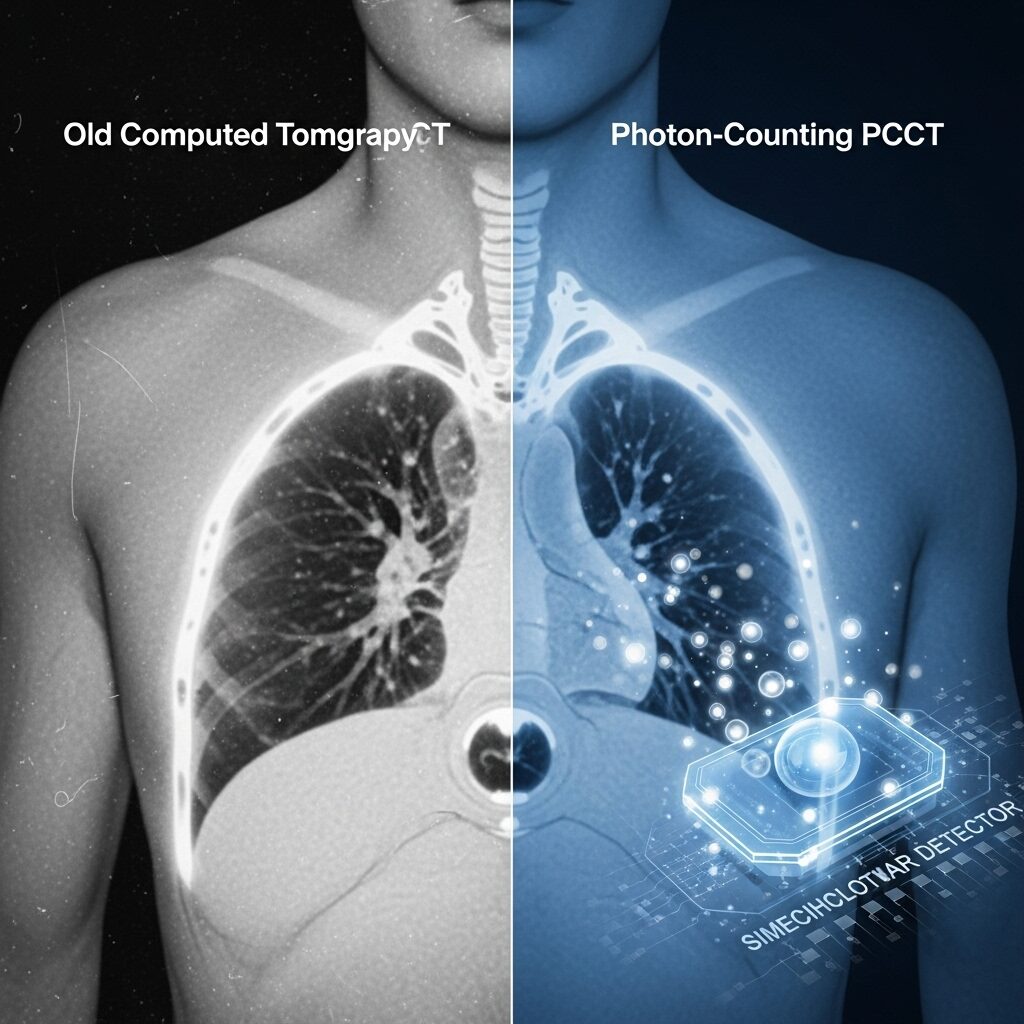
Conventional CT works like a film camera—X-rays are first converted into light, then into electrical signals.
That process introduces noise and information loss.
PCCT, on the other hand, counts X-ray photons directly with semiconductors (CdTe/CZT).
Think of it as using a high-resolution digital camera instead of scanning a film photo.
Key benefits of PCCT:
- Less noise
- Sharper details
- Captures energy differences of X-rays
👉 Result: 1.5–1.7 times higher resolution than conventional CT. Even lesions smaller than 5 mm, once easy to miss, can now be clearly visualized.
2. PCCT Brings “Color CT” to Life
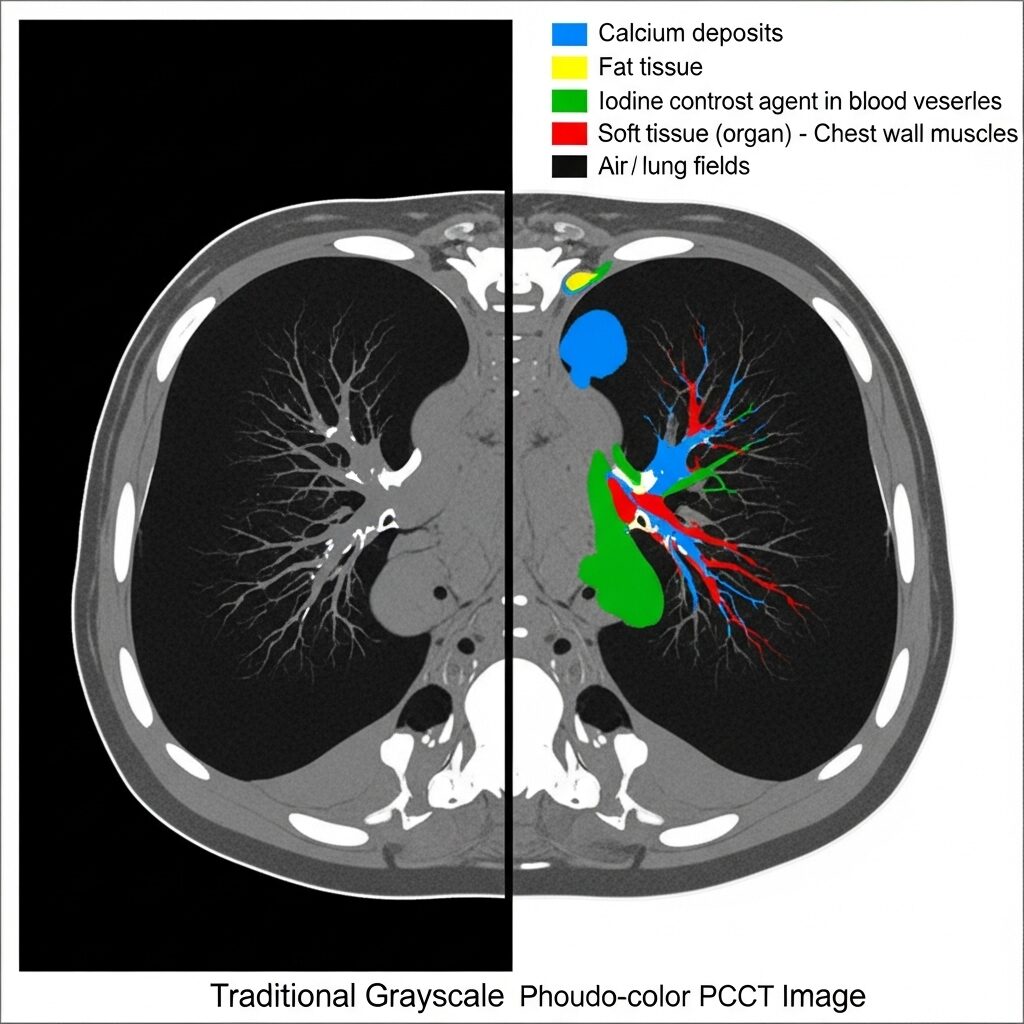
One of PCCT’s strongest features is “Color CT” (spectral imaging).
It doesn’t look like a rainbow photograph, but it uses energy differences in X-rays to assign pseudo-colors to tissues.
- Calcium → Blue
- Fat → Yellow
- Contrast agent (iodine) → Red
With this, tissues that used to blur together in black-and-white scans can now be distinguished more easily.
Transformative applications:
- Ultra-high resolution (0.3–0.5 mm) for tiny lesions
- Plaque quality assessment in coronary arteries
- Up to 1/15 radiation dose compared to conventional CT
- Wide range of uses: lung cancer, heart, bones, joints, brain, nerves
👉 “Seeing what was once invisible”—that’s PCCT’s real power.
3. AI Takes Over: Optimized for You
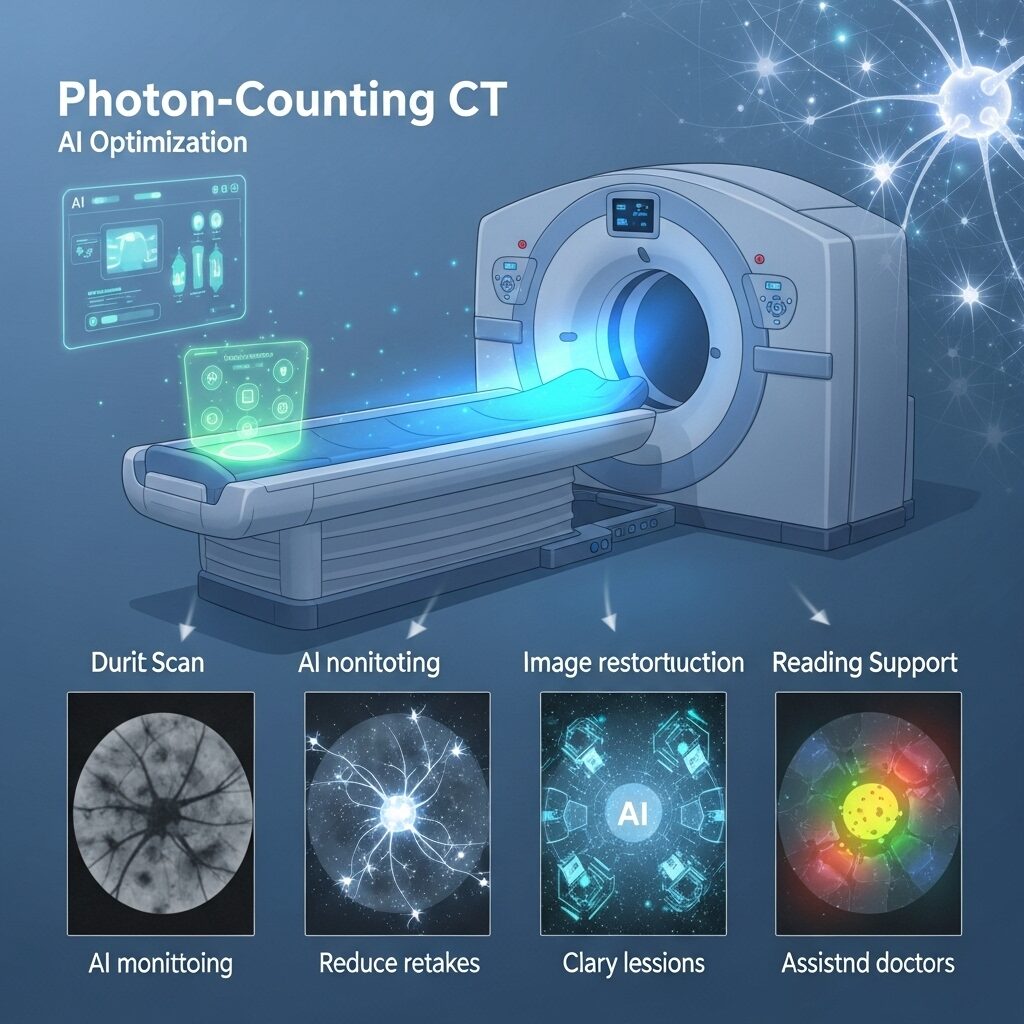
When PCCT meets AI, the entire process becomes smoother and safer.
- Before scan: AI sets the lowest possible dose for your body type and purpose
- During scan: Real-time check reduces retakes and shortens exam time
- After scan: AI reconstruction removes noise and enhances clarity even at low dose
- For doctors: AI highlights suspicious areas, reducing oversight risk
Deep learning advantage:
AI excels at removing noise while emphasizing important details.
That means even low-dose scans can look crisp and diagnostic.
👉 Combined with PCCT’s direct conversion and high resolution, the synergy is powerful:
“Lower radiation, sharper images, fewer missed findings.”
4. Radiation Like a Chest X-ray? Unbelievable But True
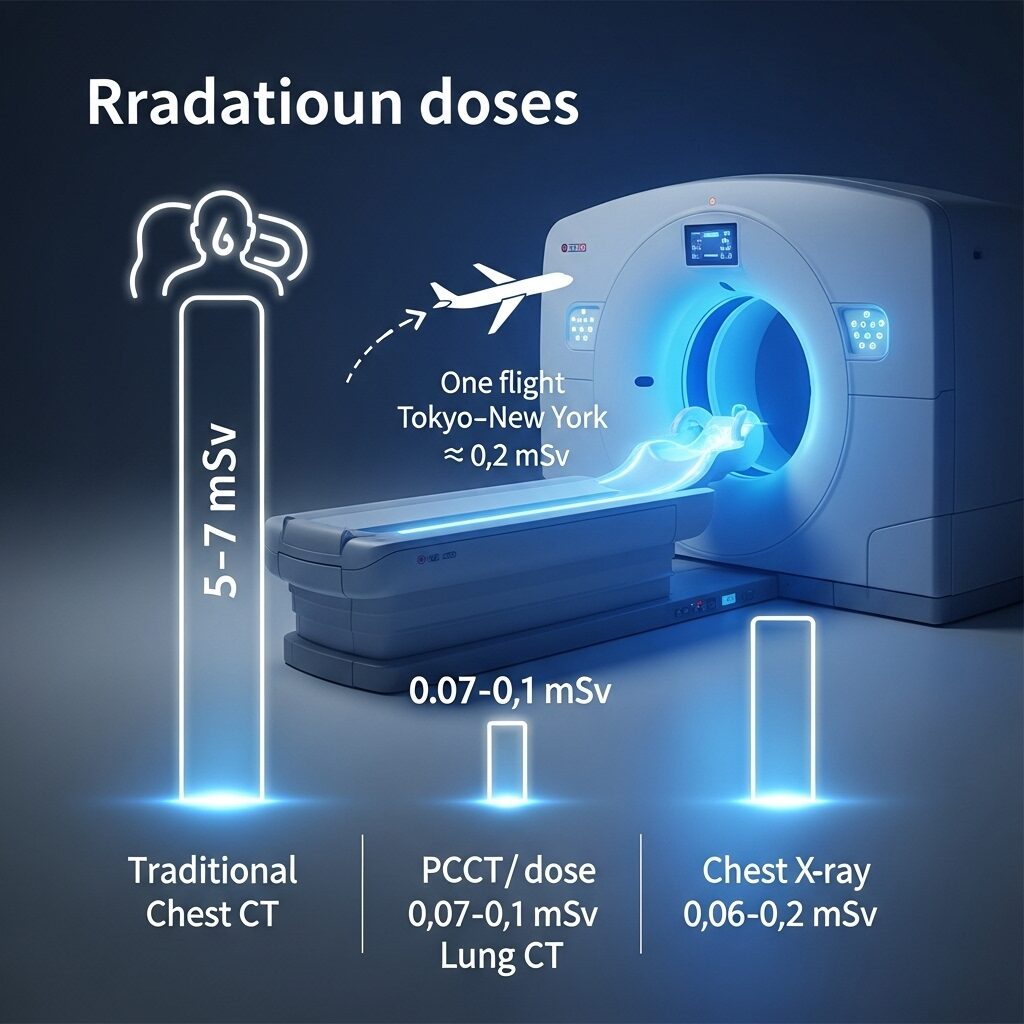
- Conventional chest CT: 5–7 mSv
- PCCT low-dose (lung cancer screening): ~0.07–0.1 mSv
👉 That’s 50–70 times lower.
👉 Almost the same as a chest X-ray (0.06–0.2 mSv) or a single airplane flight.
Core message:
👉 PCCT offers CT-level precision at radiation levels comparable to an X-ray.
5. Challenges Before Widespread Use
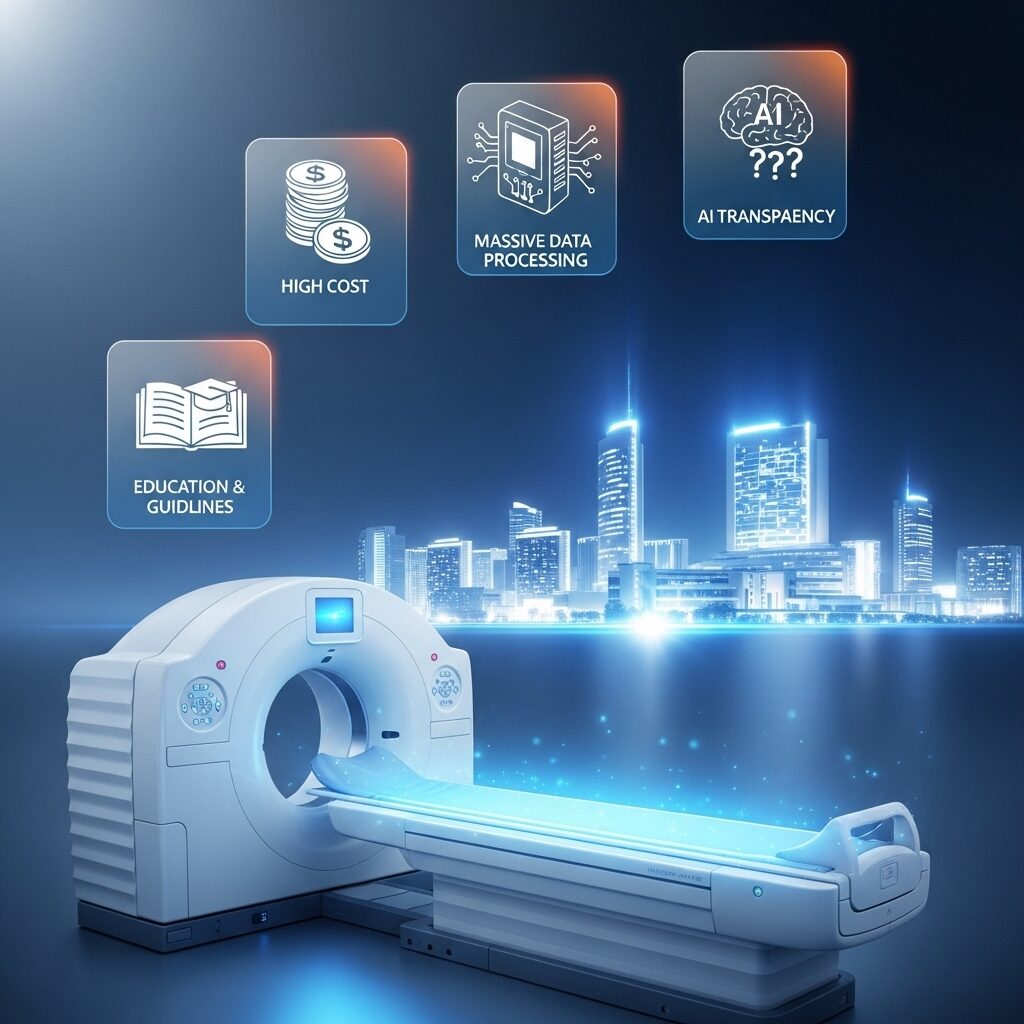
Of course, new technologies face hurdles:
- Cost: Each system costs several million dollars
- Data load: Ultra-sharp images mean massive data, requiring powerful computers
- AI transparency: Doctors need clear reasoning behind AI suggestions
- Training & policy: Guidelines and staff education are still catching up
👉 For now, PCCT might be limited to large hospitals and come at a higher cost.
But these are normal growing pains for any breakthrough technology.
6. What’s Next?
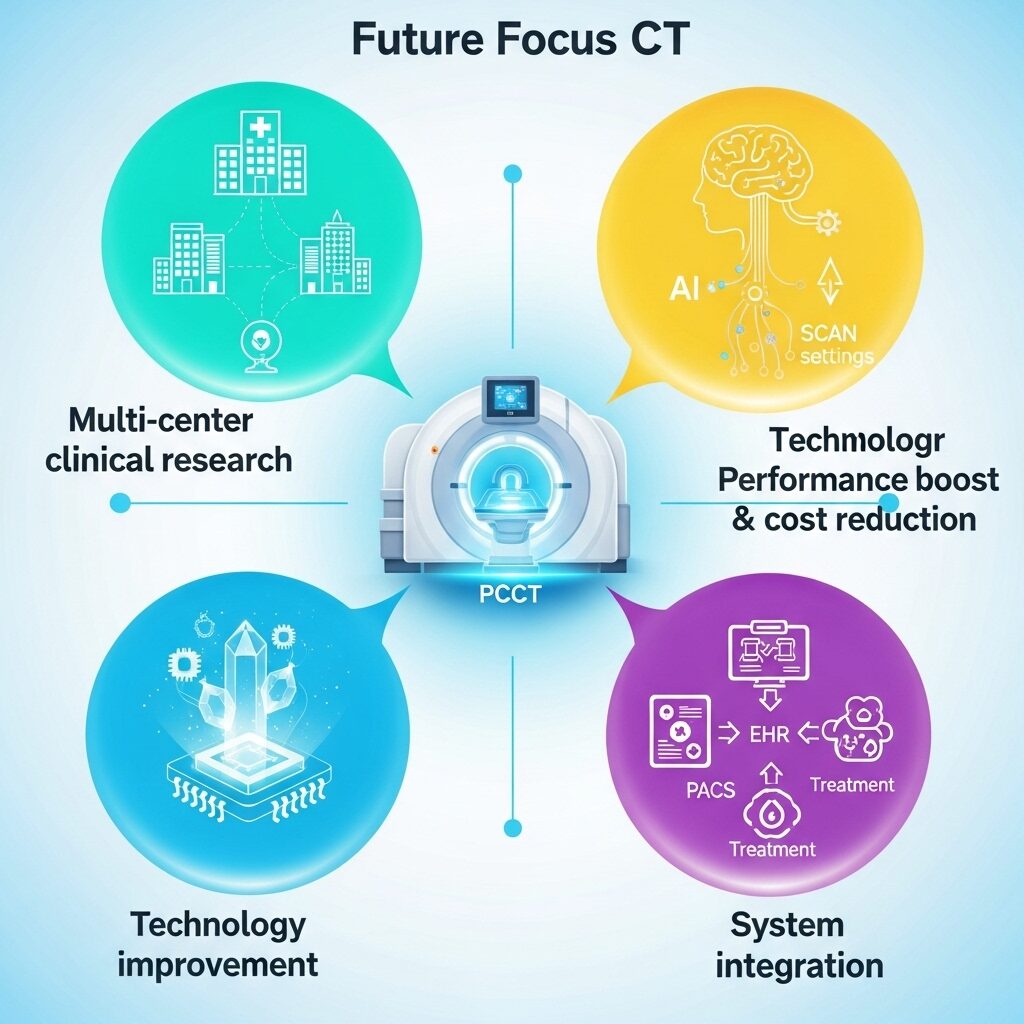
- Large-scale clinical trials underway
- Real-time AI adjustments during scans
- New materials & designs lowering cost
- Seamless integration with PACS and electronic records
Expert outlook: By around 2030, PCCT will likely spread across major hospitals.
Summary: How PCCT Will Change Health Checkups
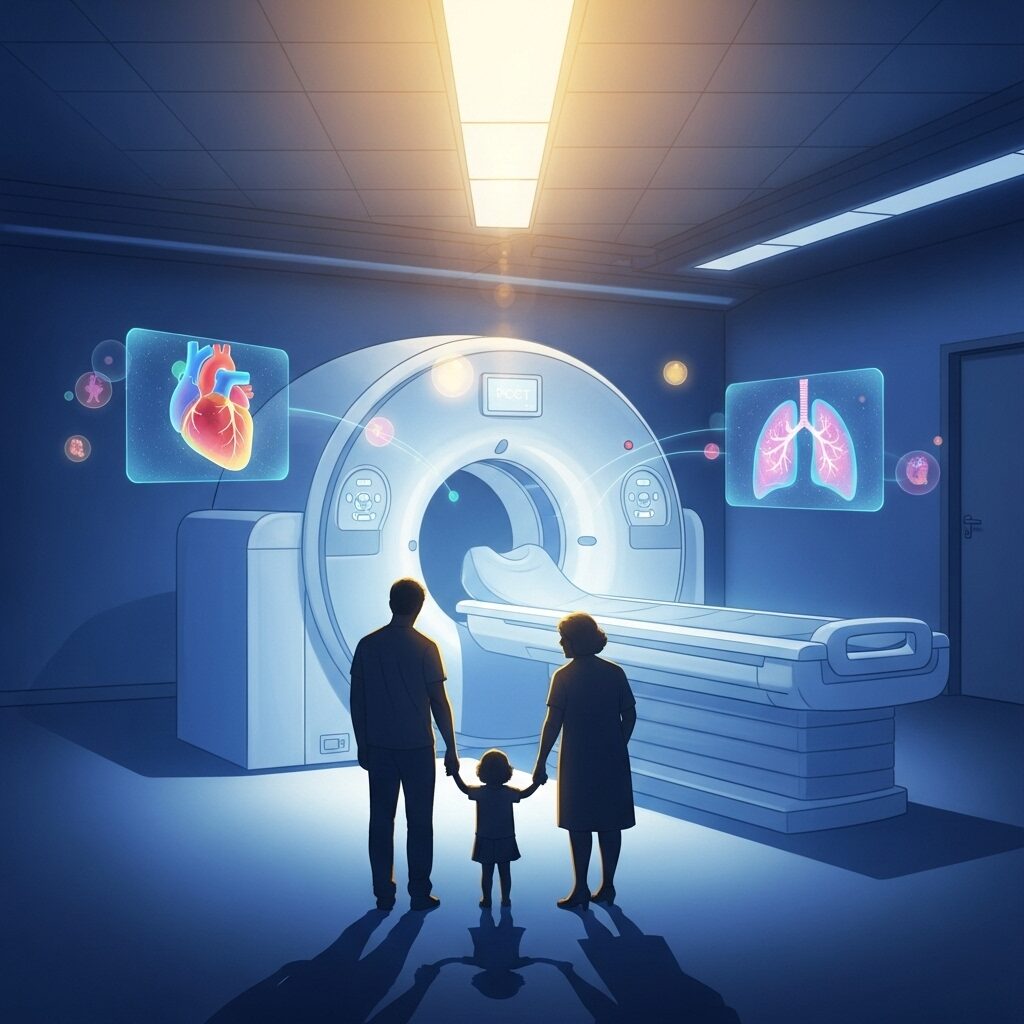
- “Digital camera” style → Clearer CT images
- “Color CT” → Easier to distinguish tissues
- Radiation cut to X-ray levels
- AI improves both efficiency and accuracy
- Challenges remain, but progress is steady
👉 The era of “CT = radiation risk” is ending.
👉 A new era is coming: “X-ray-level radiation with the precision of CT.”
Final Message
Your health is the greatest gift you can give your loved ones.
PCCT isn’t just a new machine—it’s a technology that rewrites what health checkups can mean.
Knowing about it may give you the courage to undergo necessary exams without fear—and that courage itself is a gift to your family and friends.
The future of checkups will be safer, more reassuring, and more reliable.
Why not share this information with someone close to you today?
About the Reliability of This Article
This post is a simplified explanation of the latest technology for general readers.
For clinical decisions, please refer to official sources:
- Japan Radiological Society (JRS)
- International Commission on Radiological Protection (ICRP)
- RSNA, ECR, and other global conferences
※ Radiation dose and performance of PCCT vary depending on body part and scan conditions. Please consult your physician when deciding on any medical test.
👉 Key takeaway to remember:
“With PCCT, a chest CT can now be done with radiation nearly equal to an X-ray—without sacrificing image quality.”
■Related Articles
- Exercise for Health Checkups and My Marathon Challenge
👉 Preparing for health checkups also means building daily fitness habits. - A Weekend at Azumayama Park with Fried Horse Mackerel
👉 Health isn’t only about numbers; nature and food nurture the mind too. - Only Three Pitches Left, and I Still Throw
👉 Life is finite; that’s why every step in health and prevention matters.
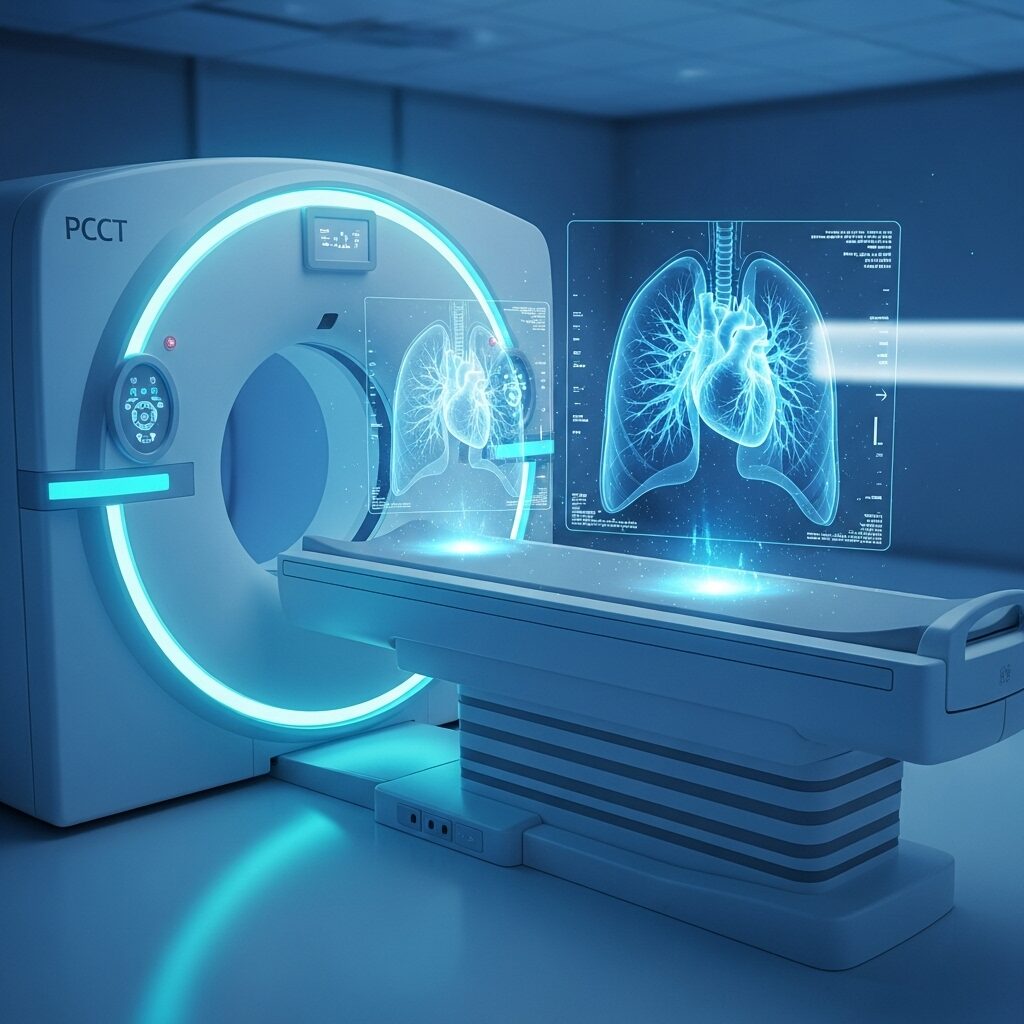


コメント